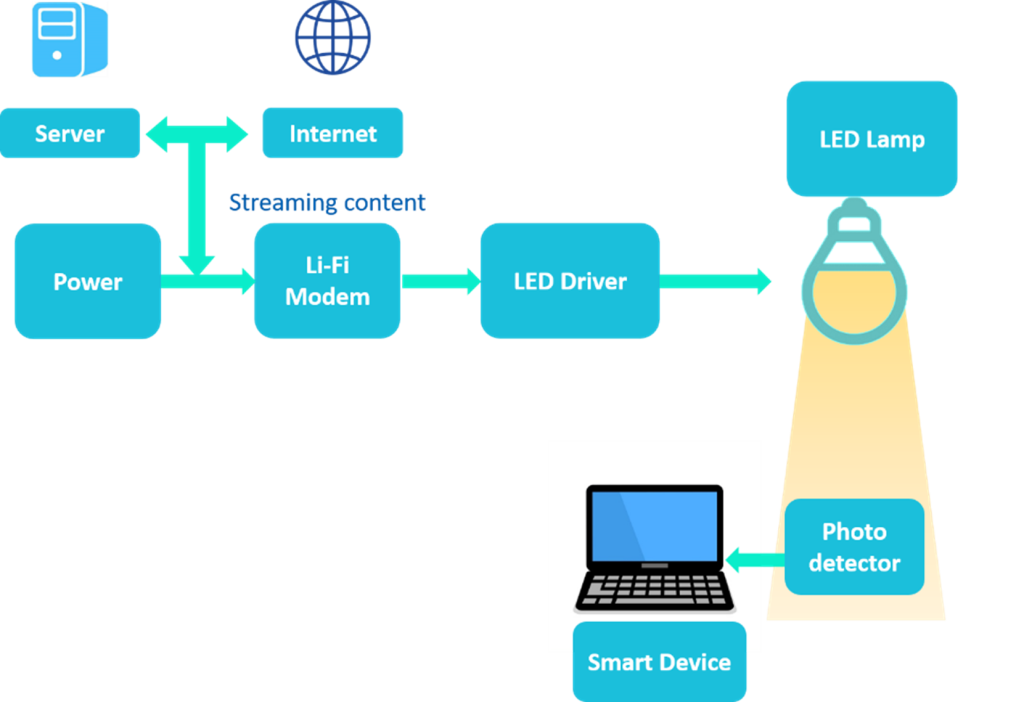What is LiFi?
Light Fidelity, or Li-Fi, is an extremely innovative technology that uses LEDs to transmit massive amounts of data. A Li-Fi application, which runs on Visual Light Communications, is known to be 100 times faster, more energy-efficient and more secure than Wi-Fi today. This is a similar concept to infrared remote controls, but has surprisingly beneficial applications that are far more useful.
Working
Visual light communication (VLC), a subset of optical communication, simply transmits information using light bulbs as transmitters. Li-Fi technology makes use of LED bulbs with built-in transceivers that can both light a space and broadcast and receive data. LED bulbs are semiconductor devices that rapidly modulate the brightness of the light wave output. When the LED is switched ON, it represents a digital 1 transfer; when the LED is switched OFF, it means a digital 0 transfer, allowing high-speed modulation of the light-emitting LED to transport information at very fast rates. In addition, the more LEDs in the transmitter, the more data it can convey. A light-sensitive photodetector on the receiving end detects the information-carrying light signals and transforms them back to their original digital form.

Because of the explosion in the number of IoT devices congesting the RF spectrum, the IoT’s reliance on Li-Fi is explained by the growing frequency occupancy. It has produced a significant need for spectrum relief, which VLC can meet by extending the broad light spectrum and preventing future spectrum shortages. Furthermore, because light waves cannot leak out of a high-density, closed networking environment, the ever-increasing worries about information security may be addressed significantly by employing Li-Fi. They also allow it to be used in situations when data transmissions must not interfere with air-traffic signals, like on an aeroplane. Furthermore, the potential integration of Li-Fi devices in locations prone to interference and security, such as data centres, hospitals, military bases, and testing labs, is why it is regarded to have the upper hand over wireless radio communications.
Benefits
- Secure: Data will be more secure than it is presently since radio frequency can travel through walls but light cannot. The user can track the data’s progress.
- No interference: Wi-Fi and other radio frequency technologies are susceptible to interference from a variety of devices, including cordless phones, microwaves, and neighbouring Wi-Fi networks. When adopting Li-Fi technology, interference is considerably easier to avoid and even eliminate.
- Smart lighting: Smart lighting will improve the appearance of the environment (both indoor and outdoor) while also offering a smart hotspot for devices.
- Cost: When compared to Wi-Fi technology, the cost of Li-Fi is very low.